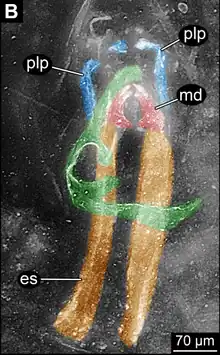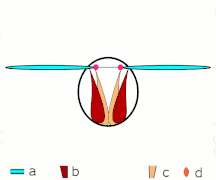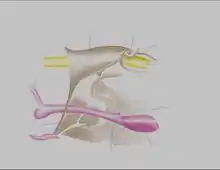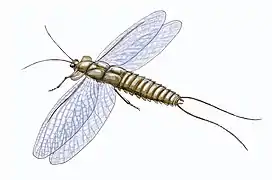The Insects Portal


Insects (from Latin insectum) are hexapod invertebrates of the class Insecta. They are the largest group within the arthropod phylum. Insects have a chitinous exoskeleton, a three-part body (head, thorax and abdomen), three pairs of jointed legs, compound eyes, and a pair of antennae. Insects are the most diverse group of animals, with more than a million described species; they represent more than half of all animal species. (Full article...)
Selected article -

Colony collapse disorder (CCD) is an abnormal phenomenon that occurs when the majority of worker bees in a honey bee colony disappear, leaving behind a queen, plenty of food, and a few nurse bees to care for the remaining immature bees. While such disappearances have occurred sporadically throughout the history of apiculture, and have been known by various names (including disappearing disease, spring dwindle, May disease, autumn collapse, and fall dwindle disease), the syndrome was renamed colony collapse disorder in early 2007 in conjunction with a drastic rise in reports of disappearances of western honey bee (Apis mellifera) colonies in North America. Beekeepers in most European countries had observed a similar phenomenon since 1998, especially in Southern and Western Europe; the Northern Ireland Assembly received reports of a decline greater than 50%. The phenomenon became more global when it affected some Asian and African countries as well.
Colony collapse disorder could cause significant economic losses because many agricultural crops worldwide depend on pollination by western honey bees. According to the Agriculture and Consumer Protection Department of the United Nations' Food and Agriculture Organization (FAO), the total value of global crops pollinated by honey bees was estimated at nearly US$200 billion in 2005. In the United States, shortages of bees have increased the cost to farmers renting them for pollination services by up to 20%. Declining numbers of bees predate CCD by several decades, however: the US managed hive industry has been shrinking at a steady pace since 1961. (Full article...)Did you know -
- ... that Parachartergus apicalis will attack Camponotus atriceps if they try to tend their treehoppers?
- ... that the Philippine hornet Vespa luctuosa has the most lethal venom by weight of any known wasp species?
- ... that amber fossils of ants carrying the extinct mealybug genus Electromyrmococcus represent the oldest record of symbiosis between mealybugs and Acropyga ants?
- ... that the extinct Protosialis casca is one of only two known alderflies from the West Indies?
- ... that the bone skipper came back from the dead after 160 years to feed on rotting bones?
List articles
- List of largest insects
- List of data deficient insects
- List of least concern insects
- List of near threatened insects
- List of vulnerable insects
- List of endangered insects
- List of critically endangered insects
Related portals
General images -
Selected image -

Insects are the only group of invertebrates known to have evolved flight. Insects possess some remarkable flight characteristics and abilities, still far superior to attempts by humans to replicate their capabilities.
Topics
Subcategories
WikiProjects
Main WikiProject:
- WikiProject Insects
Related projects:
- WikiProject Arthropods
- WikiProject Spiders
- WikiProject Animals
- WikiProject Tree of Life
- WikiProject Biology
Daughter projects:
- WikiProject Lepidoptera
Tasks
 |
Here are some tasks awaiting attention:
|
Associated Wikimedia
The following Wikimedia Foundation sister projects provide more on this subject:
-
 Commons
Commons
Free media repository -
 Wikibooks
Wikibooks
Free textbooks and manuals -
 Wikidata
Wikidata
Free knowledge base -
 Wikinews
Wikinews
Free-content news -
 Wikiquote
Wikiquote
Collection of quotations -
 Wikisource
Wikisource
Free-content library -
 Wikiversity
Wikiversity
Free learning tools -
 Wiktionary
Wiktionary
Dictionary and thesaurus
-
 List of all portals
List of all portals -

-

-

-

-

-

-

-

-

-
 Random portal
Random portal -
 WikiProject Portals
WikiProject Portals





.jpg.webp)












.jpg.webp)





.png.webp)


